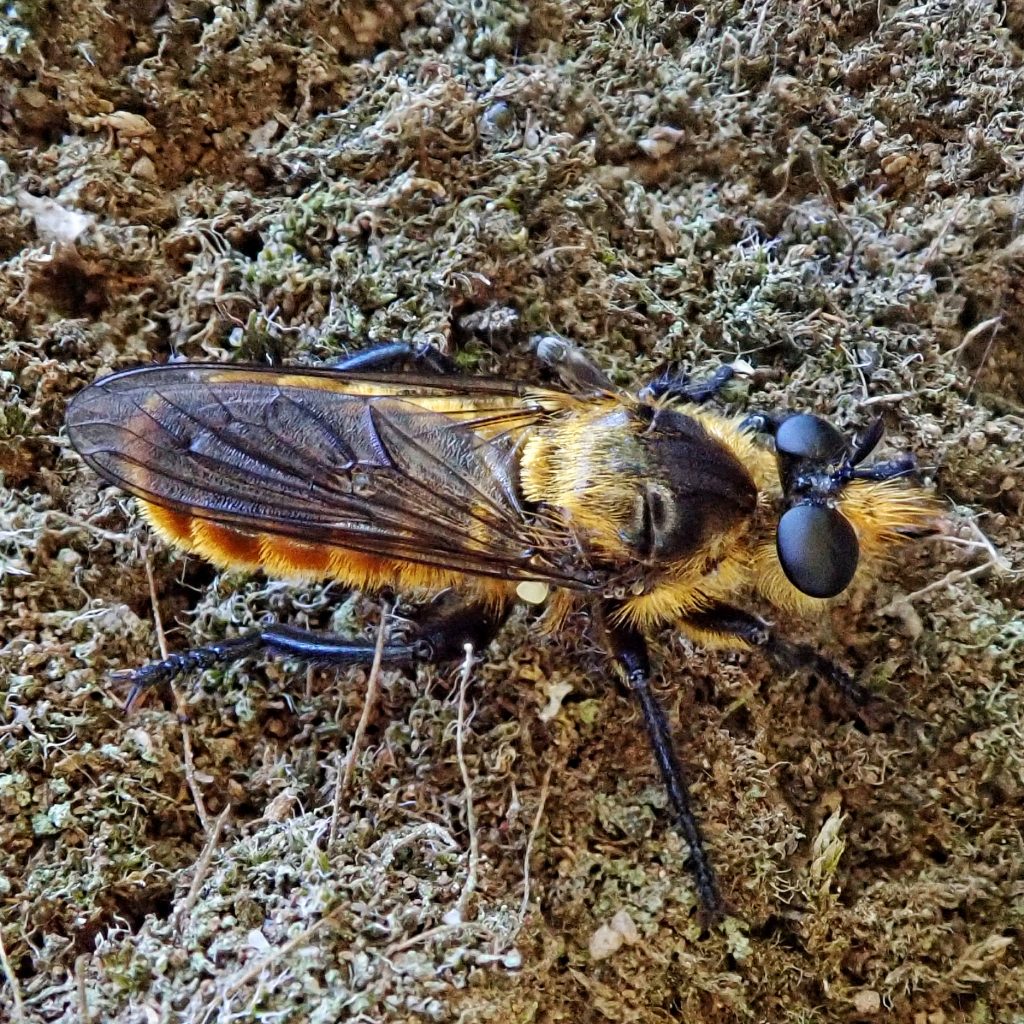
This is my first profile of a member of the family Asilidae (robber flies; also known as assassin flies). I must confess that I’m not absolutely positive that this is Laphria ventralis. That is where it keys, but the only key to this genus that I could access is over a hundred years old, and doesn’t contain all of the species that are now recognized. And there seems to be a dearth of information specific to this species, although I was able to learn something about Laphria spp. in general from S. W. Bullington’s very useful website.
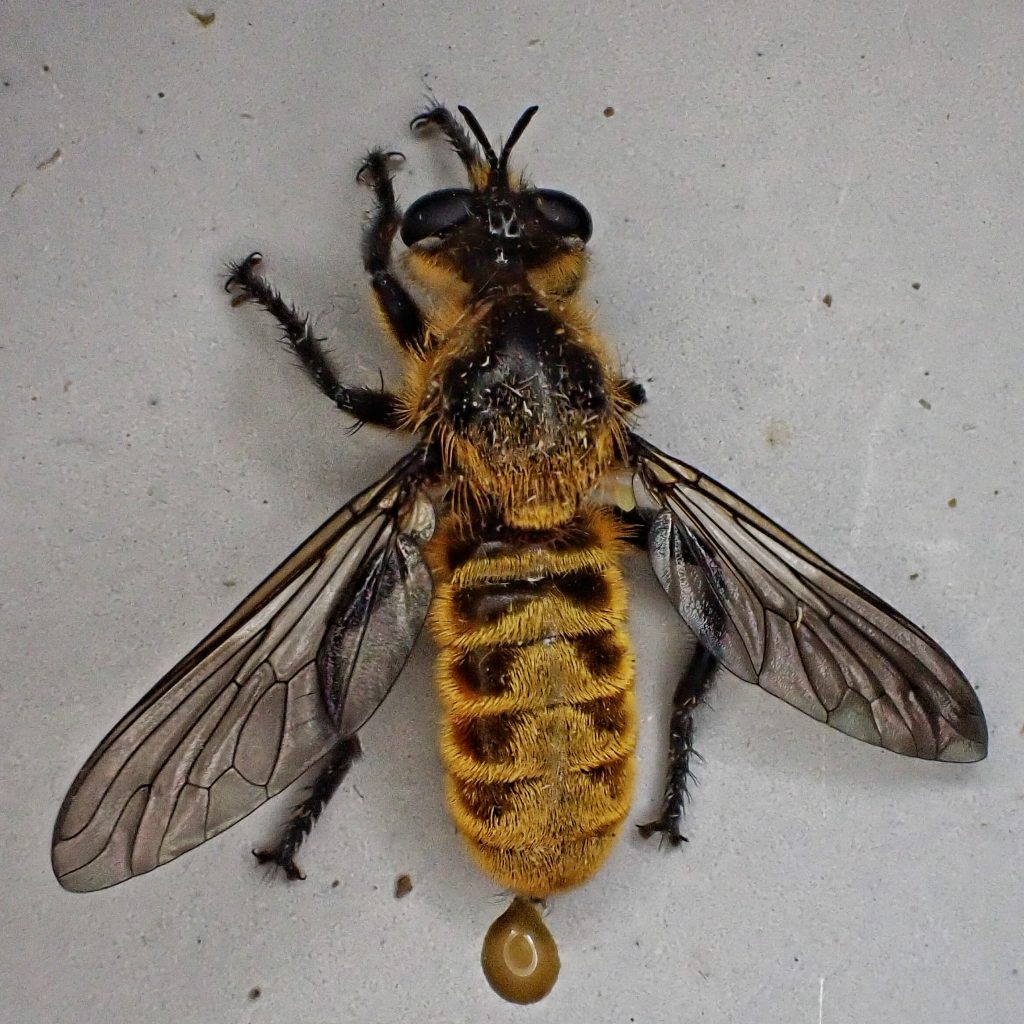
Like most asilids Laphria are ‘hawkers’, flying out from a perch to accost their prey. But they are very mobile, seldom remaining at a perch for long, unless it is in direct sunlight. The eyes are static, but the head is quite mobile, and they will even twist their body to keep their eyes aligned with an object in motion. They capture prey with their legs, and then immediately insert their knife-like proboscis (specialized in this genus to facilitate attacking large prey like buprestid beetles or dangerous ones like wasps or bumblebees), usually into the front of the thorax, and inject a poisonous digestive enzyme into their prey. They can then suck out the liquified contents at their leisure.
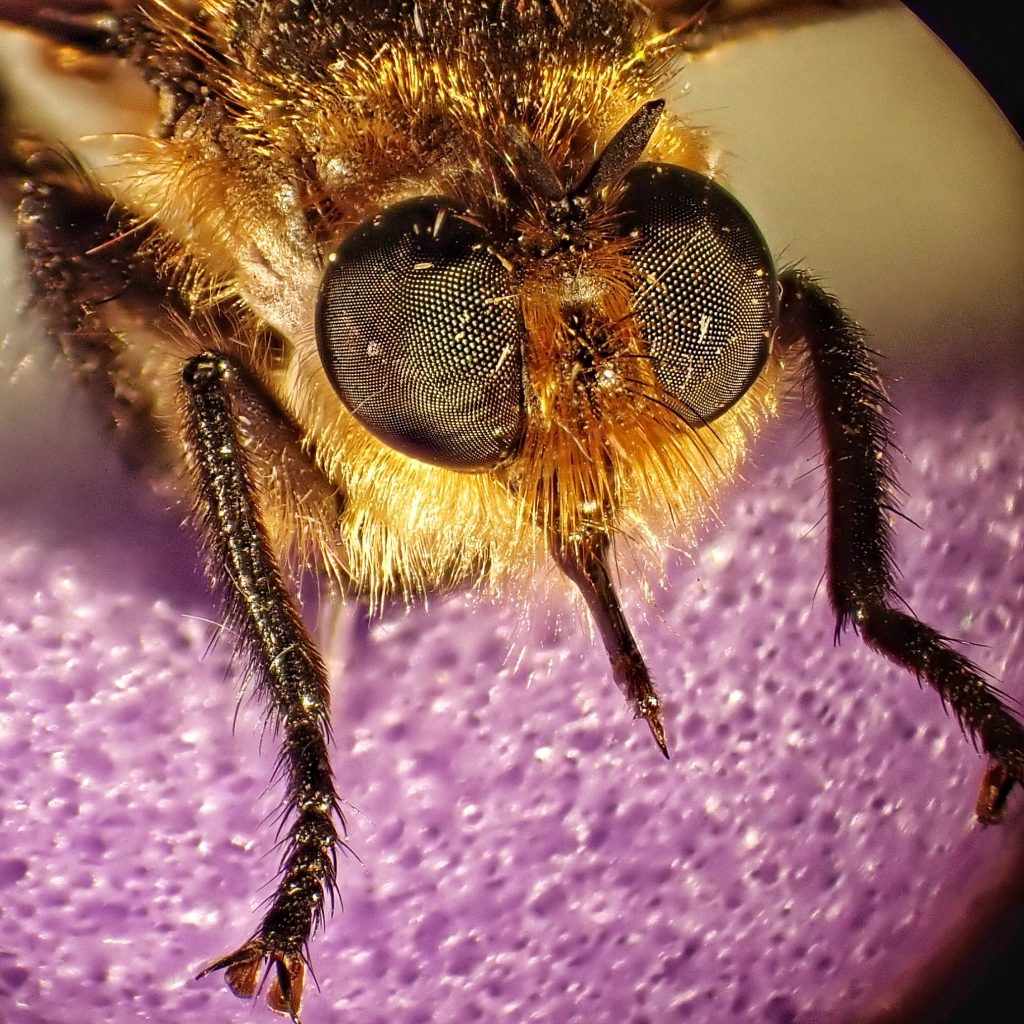
Because Laphria have ‘brushes’ on the rear of the front tibia that fit with ‘brushes’ on the front of the middle femur they can attack and manipulate very small prey such as midges. And they also have irregularly shaped claspers on the rear of the abdomen, which they can bring into play to help restrain large prey like beetles, wasps, and other robber flies. They are a very versatile killing machine.
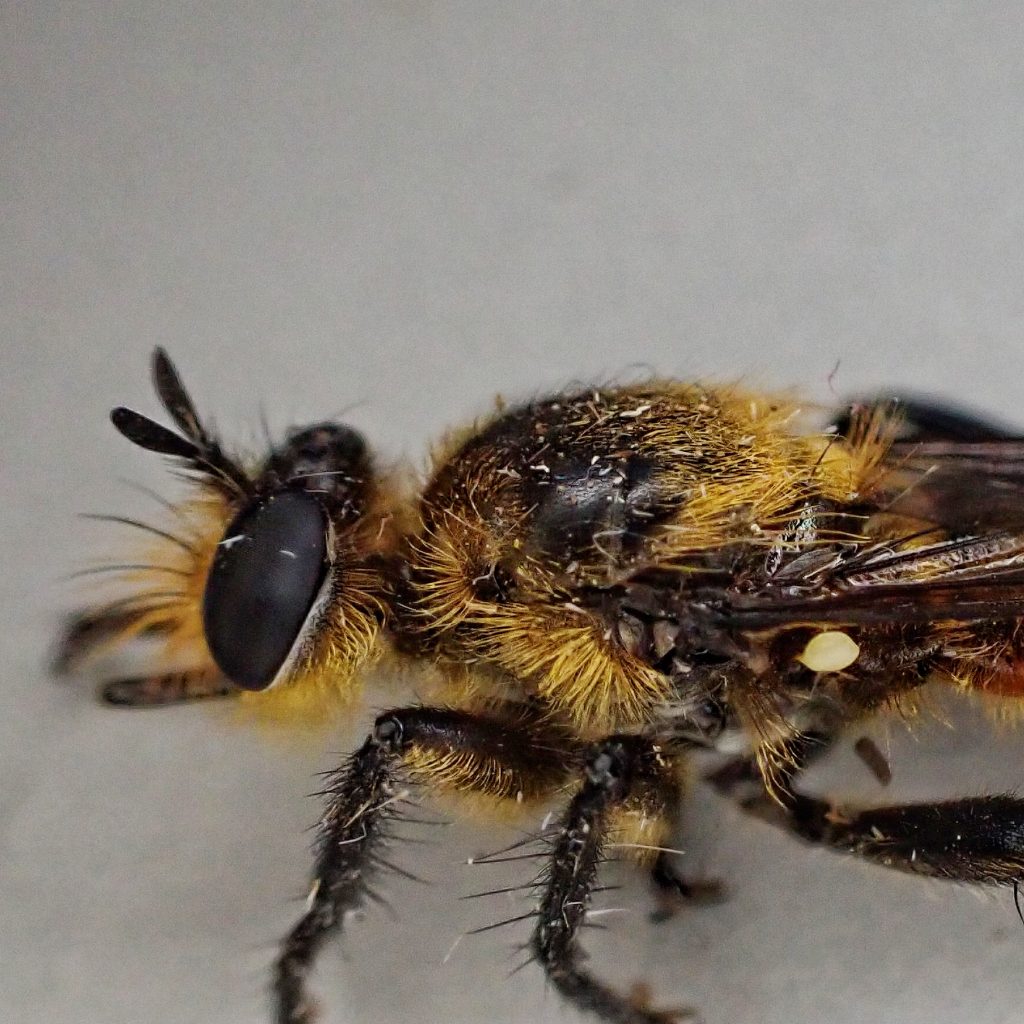
Laphria are bumble bee mimics, with abundant hair that is colored to enhance that illusion, and the common name for the genus is bee-like robber flies. They even buzz like bees when in flight! This was another species I found during the heat dome of late June. It led me to look into Asilidae for the first, but not last time, and inspired me to purchase some books to help me learn more about these fascinating flies!
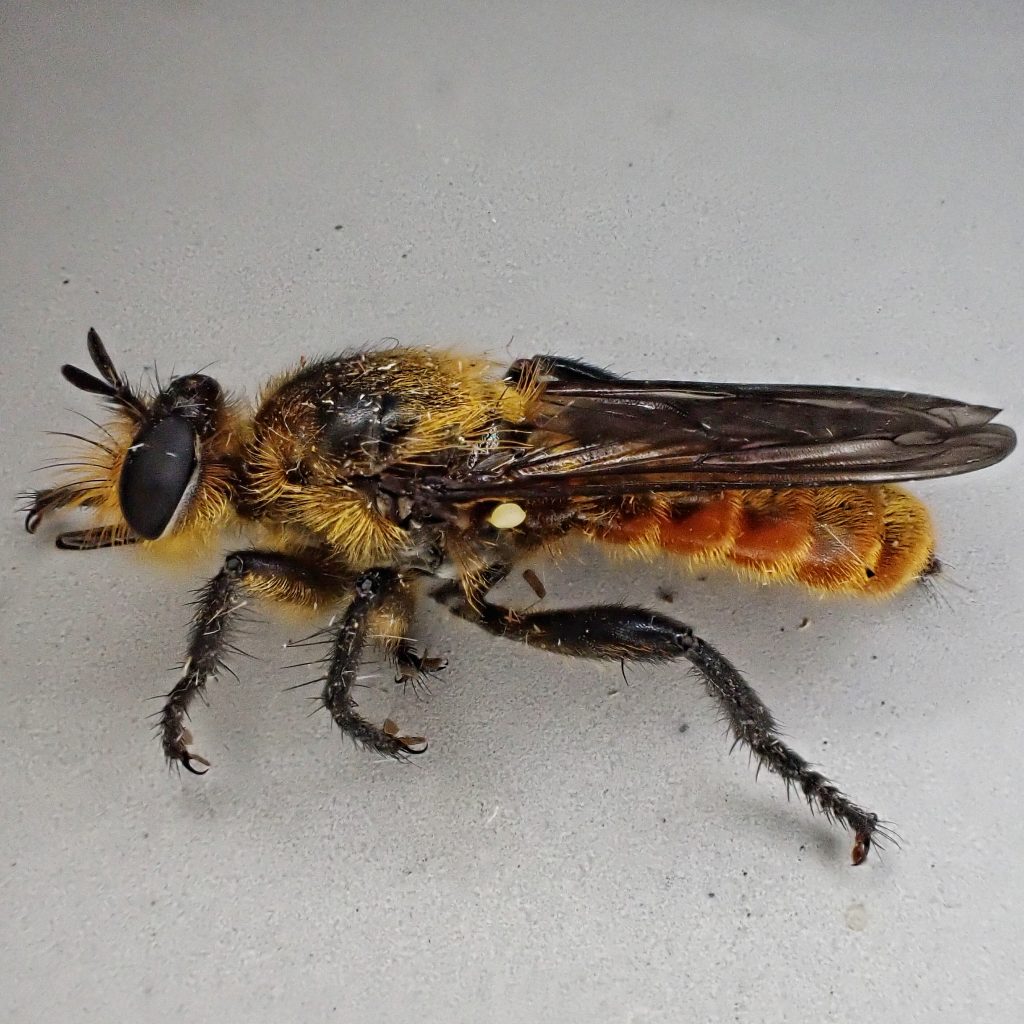
Description-Good sized (18-20mm long) robber fly with dense orange gold hairs on the abdomen, a thick patch of goldish hair at the back half and margins of the pronotum; abdomen is black under the hair (on the skin or integument) except for orange at the rear and lateral margins of each segment.
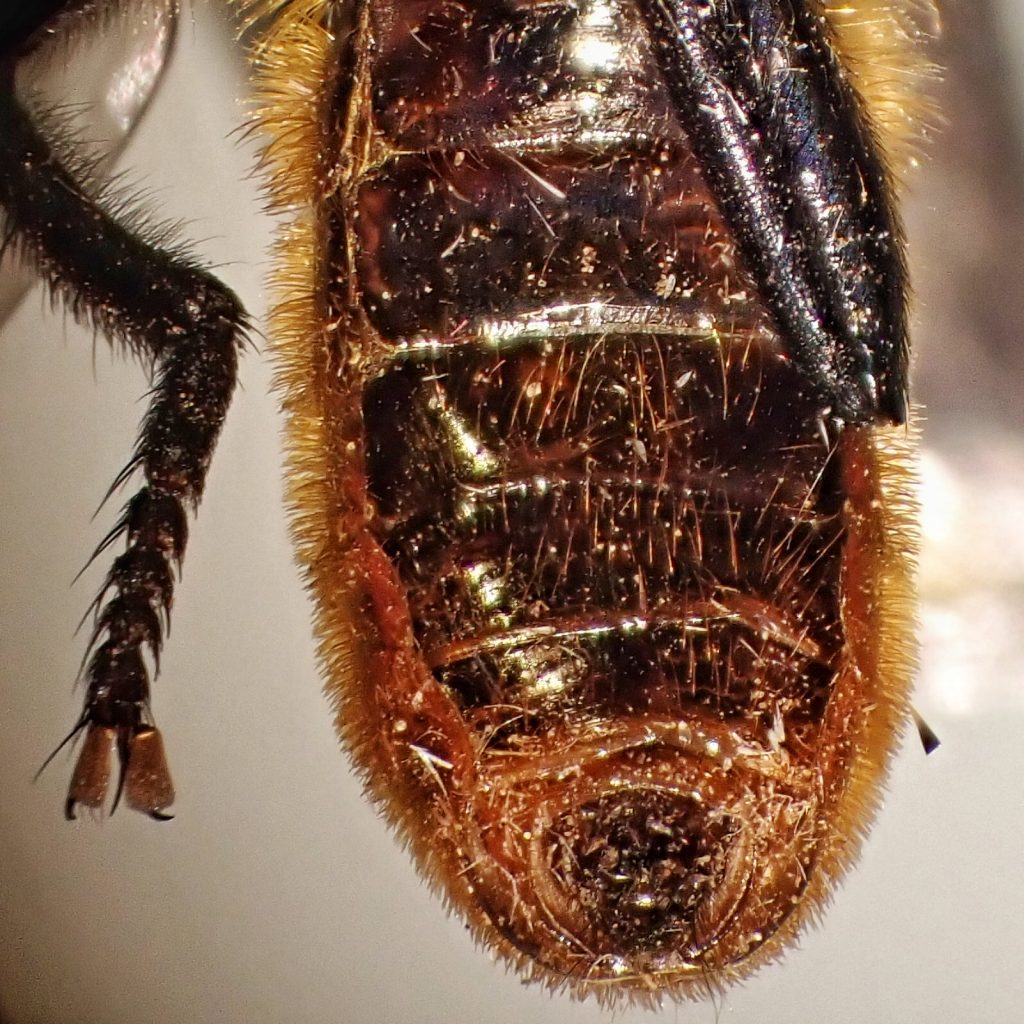
Similar species–Laphria aimatis lacks orange on lateral margins of abdomen; L. vivax, L. milvina, L. vultur, and L. janus lack any orange on integument of abdomen; other Laphria spp. have different colored hairs or are less hirsute on the abdomen, and/or have more hair on the pronotum.
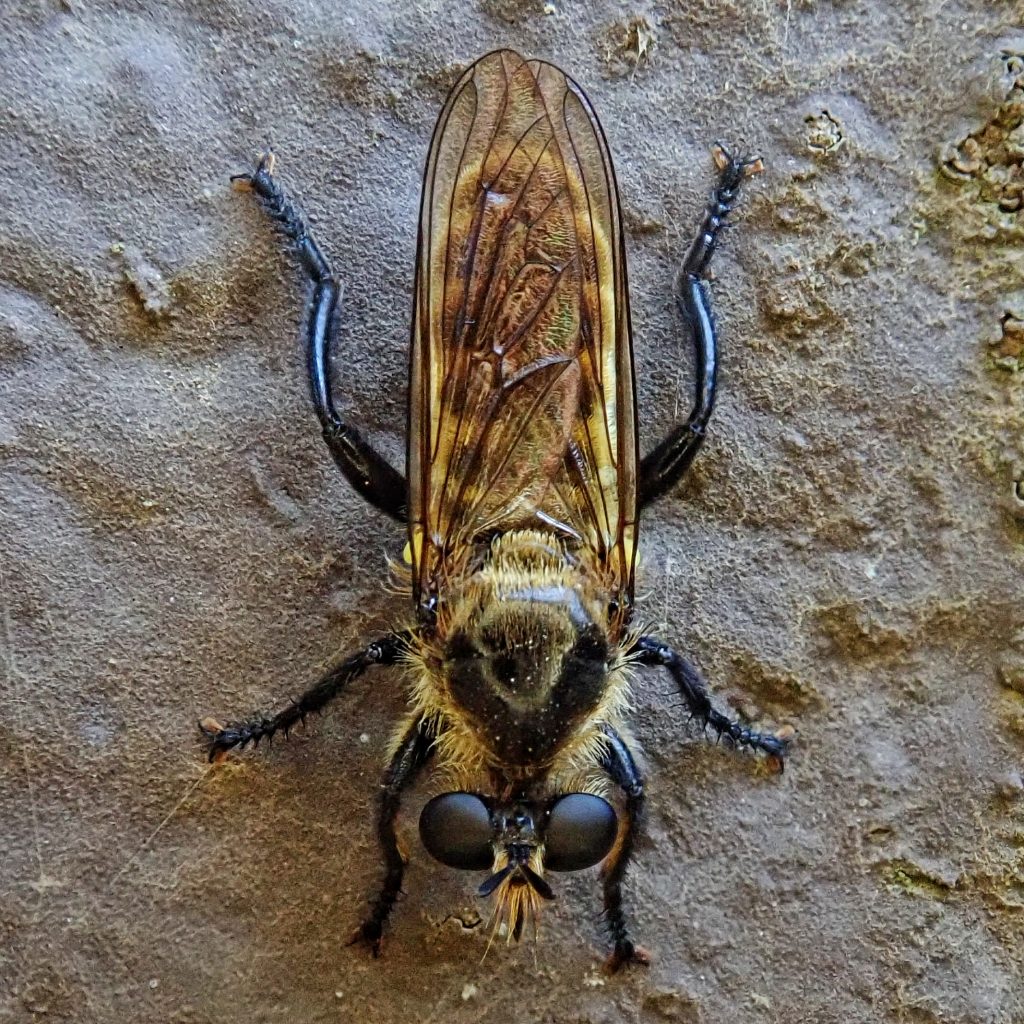
Habitat-Dry open Douglas fir forests and Garry oak woodlands.
Range-Western North America; primarily west of the Cascades in our region, with some populations in the western foothills of the Rockies.
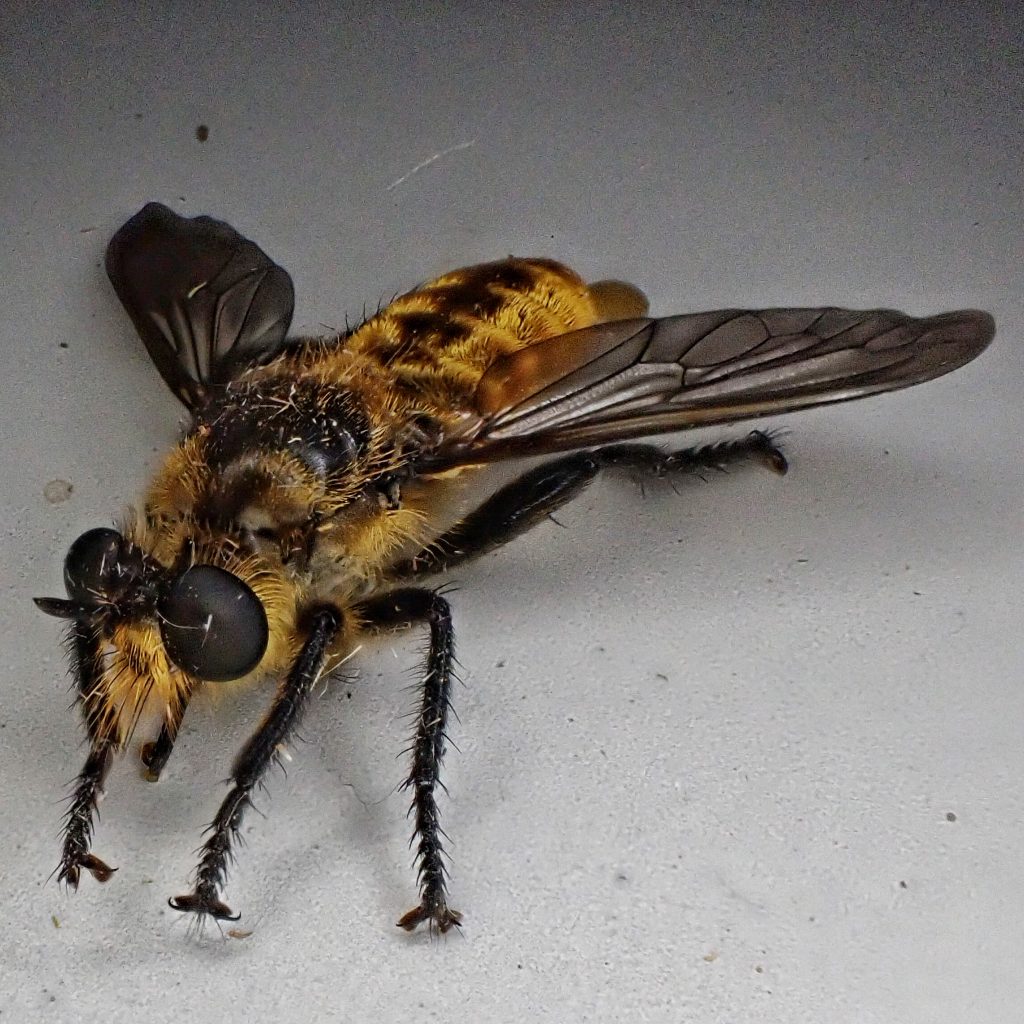
Eats-It has always been assumed that the larvae feed on the eggs and larvae of other species, often beetles, but this has never been documented. SW Bullington believes they feed on fungal hyphae in the decomposing wood; adults prey on flies, midges, bees, damselflies, beetles and other flying insects.
Eaten by-I can’t find information on what preys on the larvae. Presumably any insectivore that can find them; adults fall prey to other robber flies and predatory wasps, and to insectivorous birds.
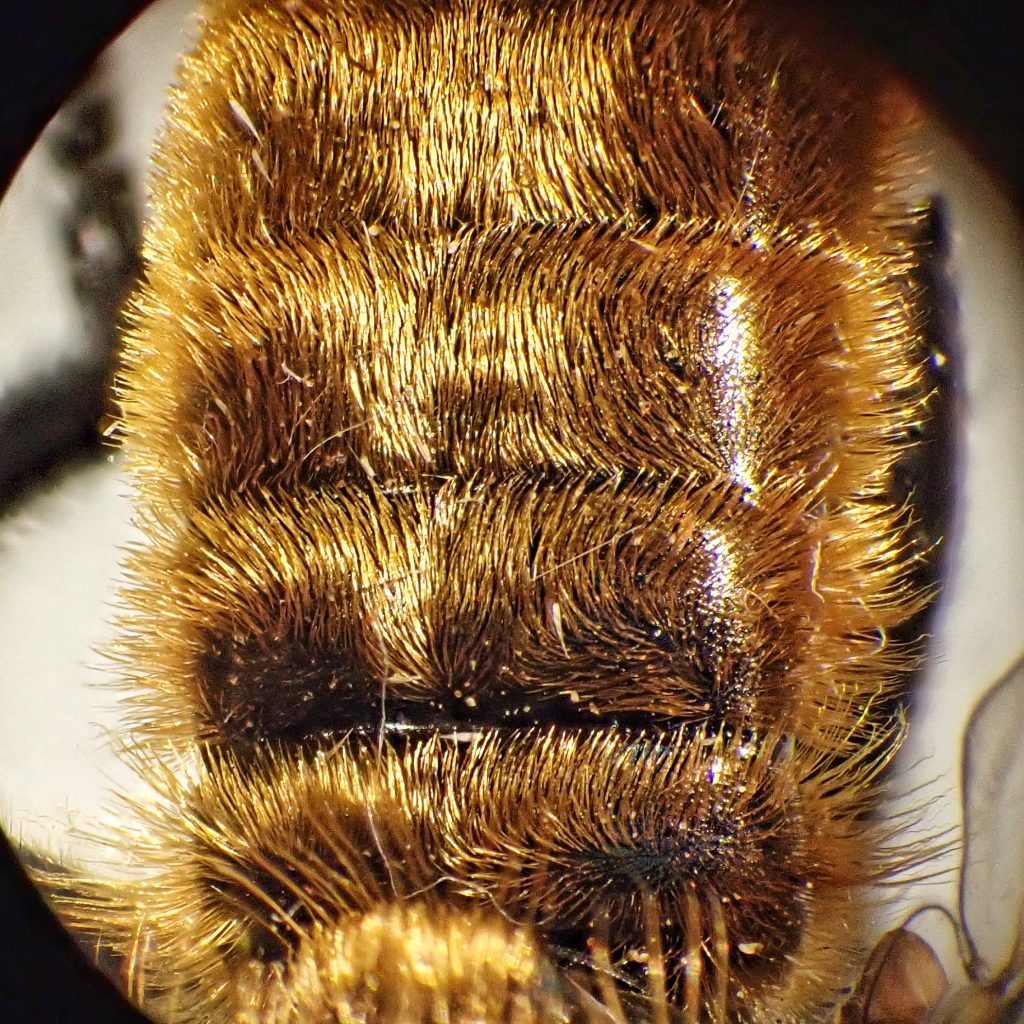
Reproduction-Larvae live in decaying wood, often stumps, and beneath bark, and bore through wood; there is no courtship, and mating is done tail to tail, and often while flying, which seems awkward but must work for them; it appears that the larvae can live for up to 3 years, but in most of our region they probably complete their life cycle in one year; adults live 2-4 weeks.
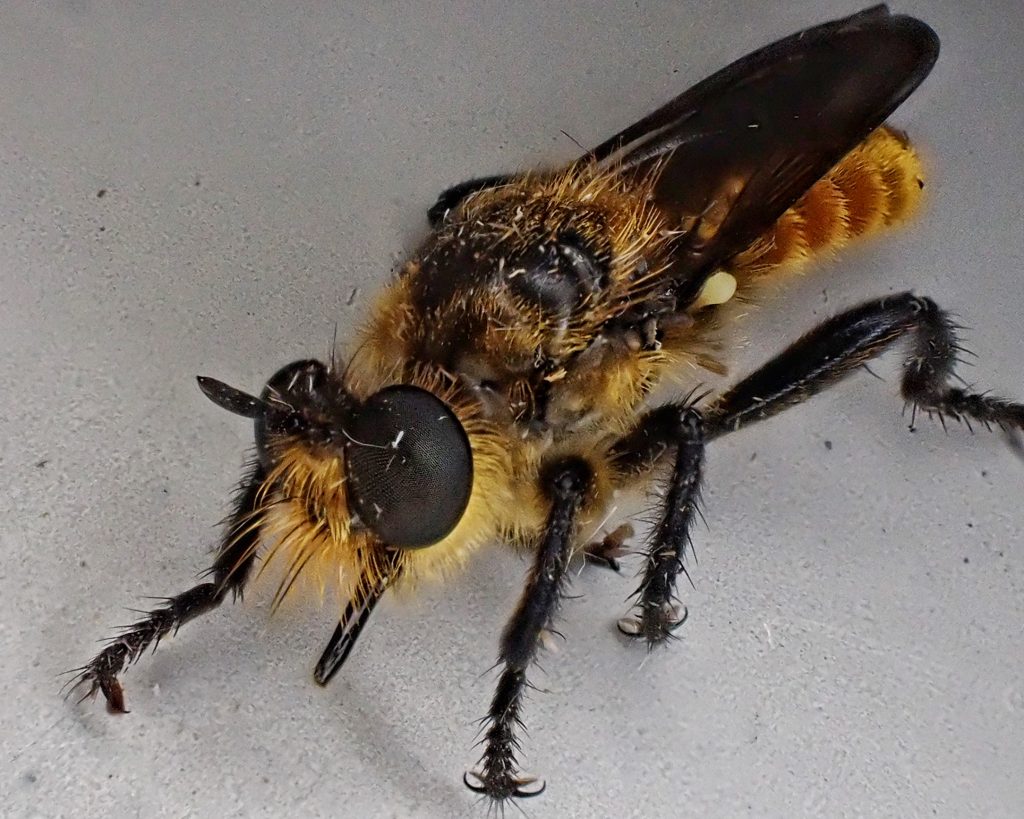
Adults active-June to September
Etymology of names–Laphria was a Greek festival in honor of Artemis, goddess of the hunt, which seems a fitting epithet for a robber fly; the specific epithet ventralis refers to the orange on the ventral lateral margins of the abdomen.
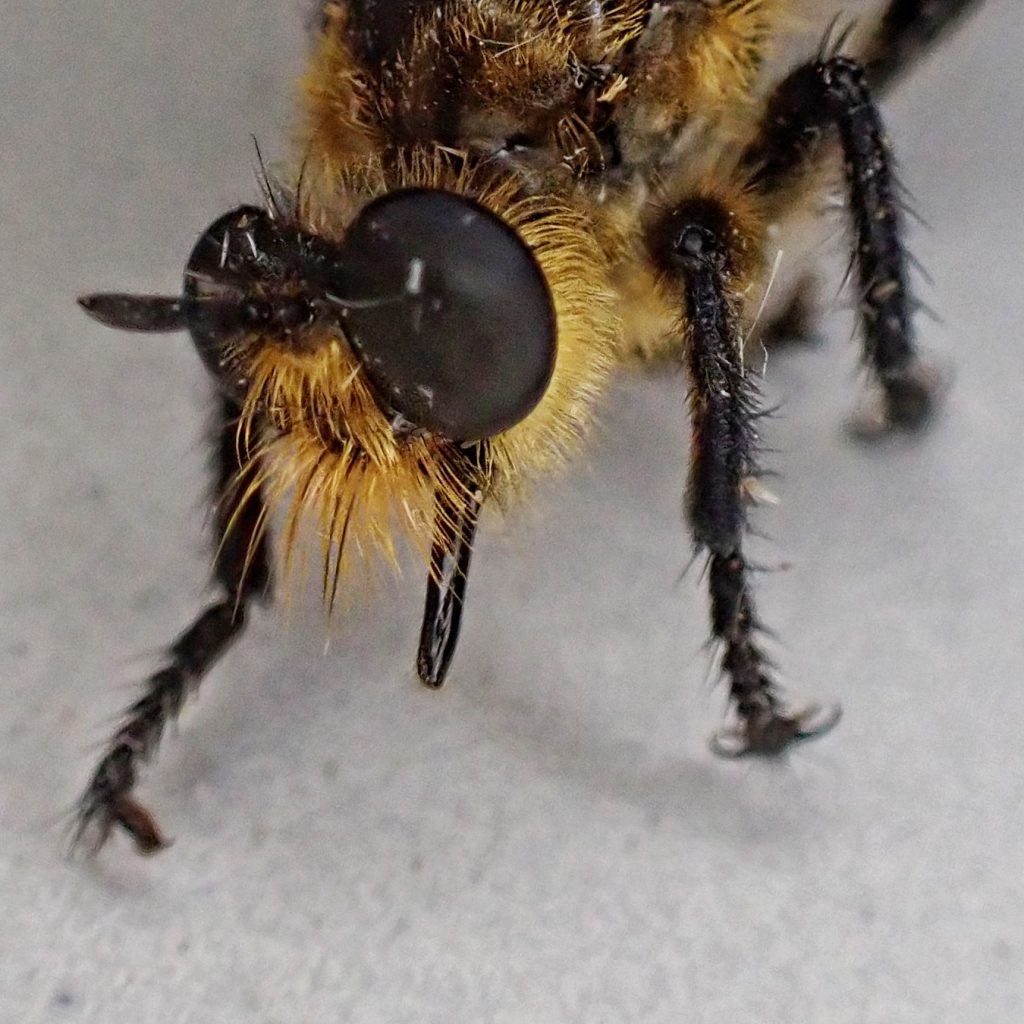
Species Laphria ventralis – BugGuide.Net
Asilidae Homepage: Information
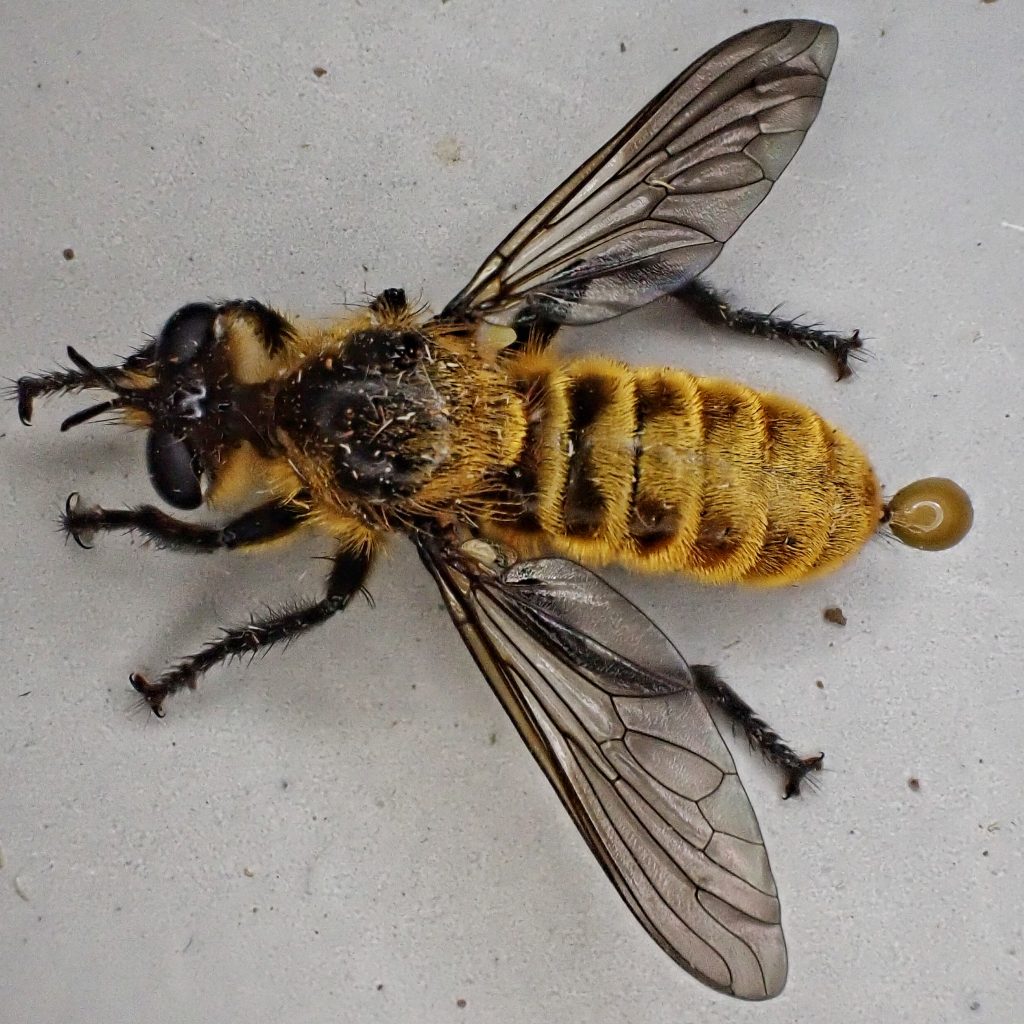
https://www.montana.edu/yellowstoneinsects/diptera/asilidae/laphria_sp2.html
In picture 4, what are the little cream things on their sides for?
They are called halteres. They use them for balancing during flight.
They are an evolution of non-flight wings.
https://en.m.wikipedia.org/wiki/Halteres
Very interesting.
I appreciate hanging out in the evenings watching the robber flies dart in and out of my rose bushes. They’re like lethal little hummingbirds that never get upset about the feeder being on the wrong hook.
Very cool! Thanks for the imagery!